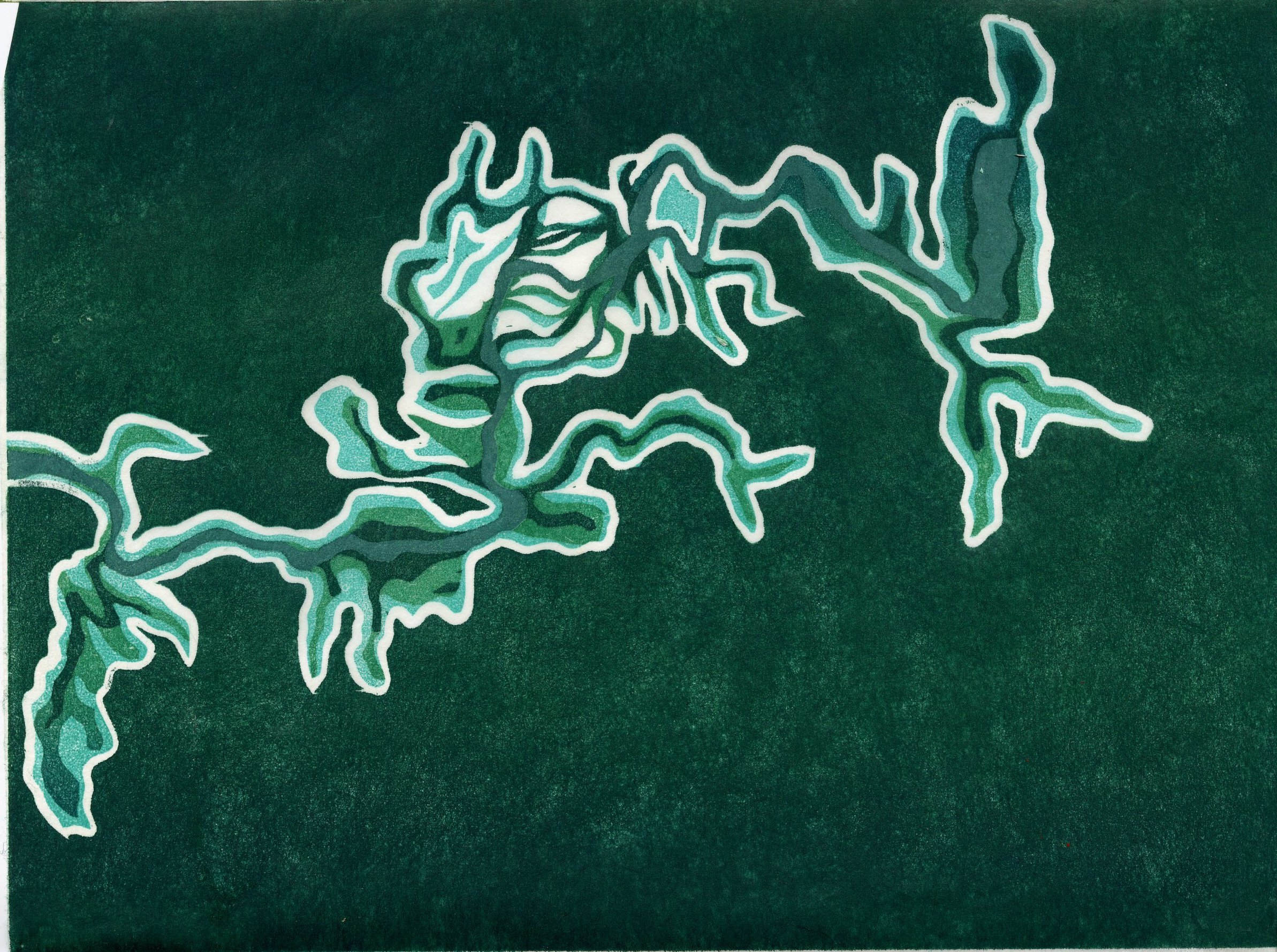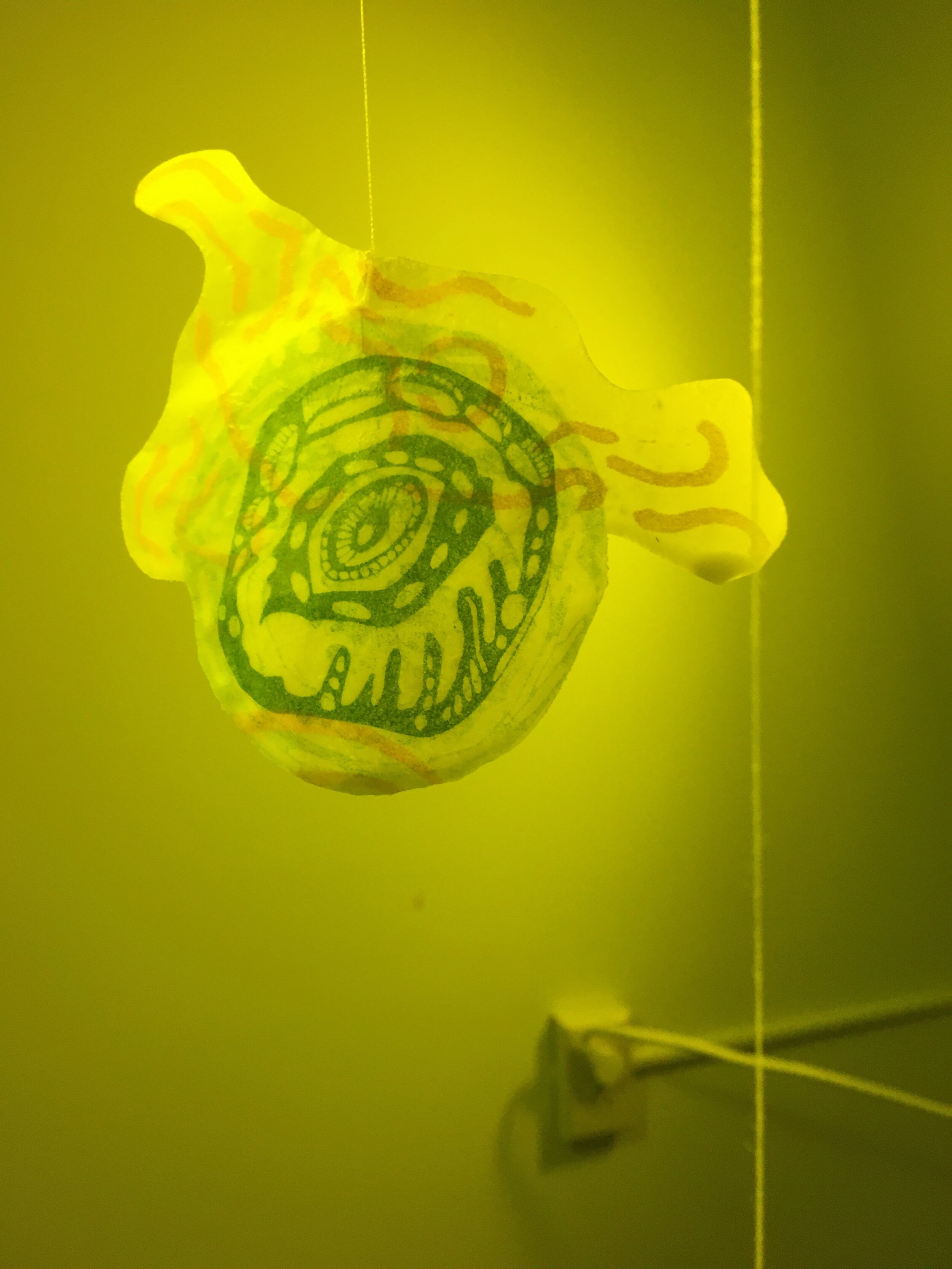
Visualizing the Range of Glaciers
This page served as a landing spot for sharing bits of my undergraduate environmental science honors thesis and related printmaking work. The North Cascades in Washington, the place I know as home, hold many glaciers that have complex ties to both ecological and human communities. Climate change is rewriting the state of these glaciers and the relationships that they can sustain. Although these connections are usually described by science, art is an expansive form of communicating a shifting landscape and its inhabitants. My project strove to explore a remarkable place in flux with various ways of knowing - scientific, personal, artistic, anecdotal. Enjoy these snippets, or download my entire thesis “Visualizing the Range of Glaciers: Science, Art and Narrative if you care to.
Mountain Evidence
This material isn’t yet sure if it wants to be a collage or a book. Layers of evidence accumulate: climate change is affecting the North Cascades. Glaciers shrink into repose, moraines emerge. The textures of Skagit gneiss and ancient ice glint in the sun. Four people traverse the range, dwarved by peaks and valleys. They find whitebark pine standing barren, no cones, no needles. Wolverine haunts the scene, quiet and rare. Scientists compile topographic maps, charting isoglacihypses and terminus retreat.
This haphazard hammer - magnet - plywood - paper configuration is a mounting wall of evidence. Mapping out the material is part of my process of understanding and connecting. Next I may add text or more swatches of color and texture. Or I will bind these prints into an interactive book. Let me know your thoughts or questions!
I highly encourage you to check out Anna McKee’s Evidence Wall for another approach on this theme!
Tangle
Description: This tangle of encaustic prints collaged on sekishu, washi and cardstock fills three dimensional space. The berries of the North Cascades are the heart of a vibrant ecological network. Ripe salmonberries and huckleberries interact with other plant forms and topography. Overlapping imagery and the aerial, shifting relationship of the pieces highlight the many relations across ecological scales.
One of my favorite blobs: many layers, colors, textures, and a coat of wax.
Process: I began printing from a stack of freshly carved blocks- some hand carved, others laser cut. Bright colors, thin paper, and many layers accumulated. I pasted some bits together with wheat paste, experimenting with new combinations of the imagery. As I moved towards presenting the prints, I thought three-dimensionally. First I tried mounting the prints off of the wall using magnets and nails of various lengths. Then one night in the studio, I stumbled into a pan full of wax, turned the heat on under it, and began dipping the prints in wax. This made them a little heavier and changed their luminosity. I added string and then constructed the mobile in a few orientations.
Work in progress, aka configuring a configuration. I’m still working on the final arrangement and getting some good documentation of this piece. I’ll take a video, as it’s really neat to move around and through the objects and get them to spin, meeting the patterns on both sides and getting a feel for the interplay between the pieces. This is the first time I’ve really put my prints into the air and I am excited to keep experimenting with suspended wood, acrylic and paper.
60 second video moving through an early casual installation of the piece
A re-introduction to this year’s work
Since last summer, I have been making woodblock prints and collage about the North Cascades in Washington state. I am particularly interested in exploring the connections between glaciers, climate, people, plants and animals. Personal experience, scientific research, and conversations with occupants of this landscape shape the stories I share through printmaking.
Photograph by Torsten Brinkema
My final piece from fall semester is a tall scroll. The print leads the eye through a cascade of characters, composed and layered in such a way as to encourage an entangled understanding of the place and its players. There is a perched raven, a ghostly salmon and a river of jumbled sediment. Each has unique character but is also defined by their relationships to the others around them. Opening oneself to the worlds of these many inhabitants, the viewer is embedded in the complex web of lives and textures that comprise the North Cascades.
In this scroll, I toy with different narratives that surround glacial landscapes – glaciers as a biome, a laboratory, a playground, a pristine wilderness, and a vanishing one. Ice is an interesting environment to explore the relationship between people, “wilderness” and the climate catastrophe. With this first scroll, my hope was simple: that the beauty and whimsy of alpine life as I portray it can inspire people to learn from and care for these places. Appreciating the “beautiful now” in spite of uncertain and dimly framed end-times is a hopeful act, one that sows the seeds for striving for a better future.
Photograph by Torsten Brinkema
As in previous years, my printmaking practice is entwined with environmental science. Creating art is a sounding board for the scientific topics and problems that I wrestle with. Equally as important, art is a way to place visual emphasis on what I find interesting, important, or simply observe around me. My prints are comprised of many layers: scientific specificity from data and maps, the physical intuition of carving or sketching, colors both realistic and imagined, free flowing line work, principles of ecology, the emotion of climate change and a shifting landscape. I hope that the viewer digs through these layers, finding some perspective and connections along the way.
Looking forward, I am eager to proof the blocks and designs I made over winter break. These blocks range from specific (the effect of climate change on sub alpine tree species) to the abstract (tangles and portals). Experimenting with color and layering during the printing process will be fun. I also have drawings and photographs that I am eager to work on digitally and laser cut into wood or transfer to other printmaking media.
New species and stories have also entered my awareness. I am excited to show the story of the denning wolverine mother through new prints, for example. I will continue to craft images and narratives about snow-obligate species. Completing two more scrolls is one of my goals. Printing, cutting, pasting and composition are elements of my practice that I hope to work in expansively this final semester. New techniques and ambitions may alter my course in exciting ways. I will continue to seek a balance between unfettered creativity (Just DO!) with the semester’s demands for a polished body of work and integration with my environmental science thesis. As I continue to think about science and art as tools for communication, I am excited to hear what my peers think of my art- how it is read and felt. I am hoping that this semester’s critiques delve into technique, content, ideas, and how to improve.



























